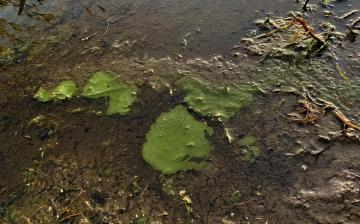
Water is called the "universal solvent" because it is able to dissolve more substances than any other liquid. It means that wherever water goes—through the air, in the ground, across the land or through our bodies—it picks up and takes along valuable chemicals, minerals and nutrients. This is important to every living thing on earth.
Water pollution occurs when enough of a substance enters a water body, such as a stream, river, lake or groundwater aquifer, that it degrades the water's quality to the point where it is harmful to humans, aquatic life or the surrounding environment. Water pollution can be caused by a wide variety of different substances, such as microorganisms, human or animal waste and chemicals. Even too much of a good thing, like nutrients, can cause toxic conditions that affect wildlife. In addition to pollutants, certain conditions, such as high temperatures or excess surface runoff into streams, can also stress aquatic life.
The Missouri Department of Natural Resources studies, monitors and regulates numerous water pollutants. As more research is conducted, the department learns more about common pollutants, such as nutrients, bacteria and chloride. Research also detects new contaminants, such as per- and polyfluoroalkyl substances (PFAS).
In addition to the pollutants listed below, Missouri's Clean Water Law and regulations contain water quality standards for many substances, characteristics and pollutants. Many of these are not widespread problems, in part because the rules have led to adequate controls.
